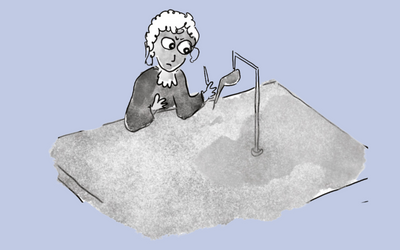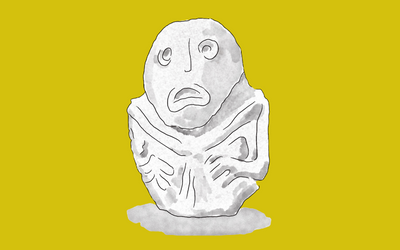Stone ages

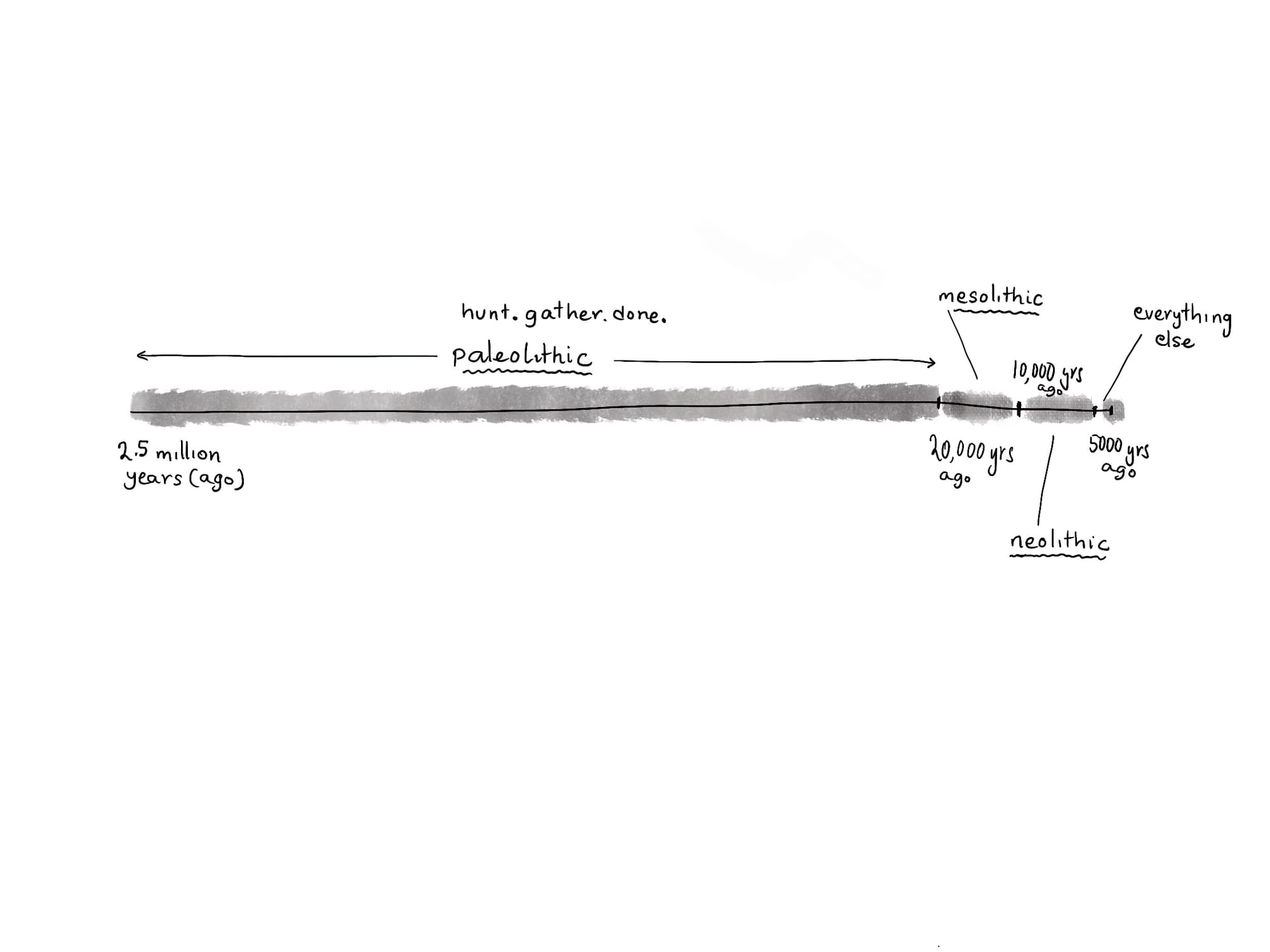
The stone ages (no, this is not the time we were all stoned, that comes much later) are part of pre-history, i.e., our story before writing was invented. Roughly, it started with the Homo Erectus, which is the species that lived all over Earth about 2 million years ago and was quite adept at using the stone as a tool.
The vast majority of our existence has been in the stone ages, the rest of the time accounting for less than 1 percent. The stone ages are split into three parts:
- Palaeolithic Age
- Mesolithic Age
- Neolithic Age
Again, it's fun to understand why it's named so. Lithos is greek for, you guessed it, stone. Paleo means "old", meso is "middle" and neo is "New". Easy peasy lemon squeezy.
In this part, we will see how the Homo species that lived around that time went about their life. What did they eat, wear, do...think?
Palaeolithic Age (2 million years to 20,000 years BCE)
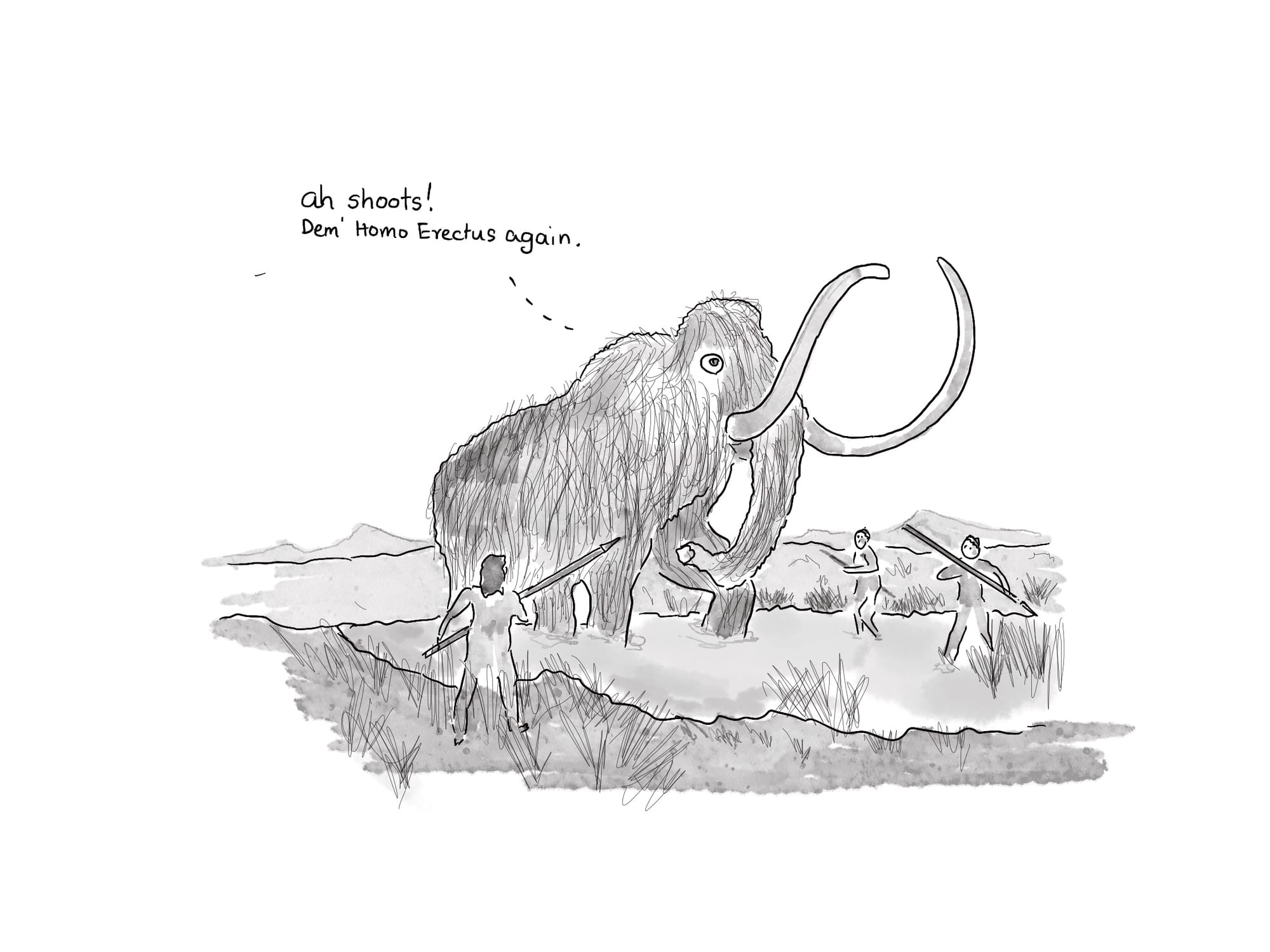
https://en.wikipedia.org/wiki/File:Hunting_Woolly_Mammoth.jpg
In this age, humans were "hunter-gatherers." It is exactly as you imagine it to be. You hunt your meat or fish, gather some berries, and you have that ultra-healthy salad. Then you move to another area to repeat the process. Exercise was built into the lifestyle.
The humans did invent some tools as we saw before - mainly out of stone (hence the "stone ages") but perhaps also out of wood that they fashioned into spears. It is romantic to think that they used these to hunt great mammoths, and perhaps a few might have actually gone down, but most of the "hunting" was catching fish. Because fish generally don't fight back. Humans back then also ate leaves, nuts, roots and seeds, which they might have extracted using their hand axes (sharp teardrop shaped stones that could be used with the hand to cut and dig).
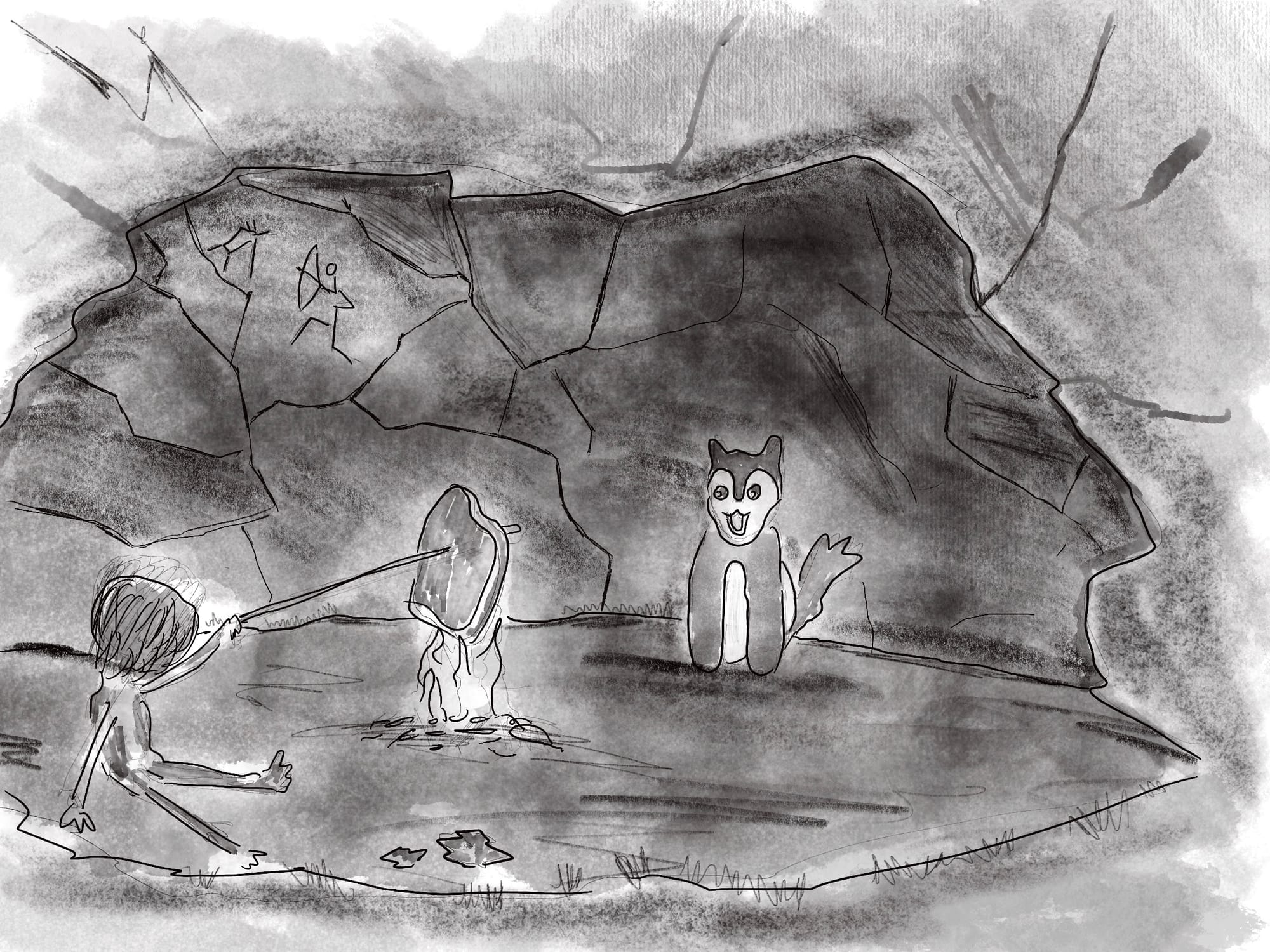 Earth had been much warmer before the Stone Age, but the climate started cooling. Over the next million or two years, Earth would go through a period of extreme cold (5 degrees Celcius) with large parts covered in sheets of ice, to warmer climates as that exists now. Yes, even today, we're in that same ice age our stone age ancestors were in - it's just that we're in between two glacial periods. It is during these inter-glacial periods that mankind has thrived and innovated new tools. The current inter-glacial period started about 10 to 12 thousand years ago. Typically, each inter-glacial period has lasted tens of thousands of years, so we're probably okay for now.
Earth had been much warmer before the Stone Age, but the climate started cooling. Over the next million or two years, Earth would go through a period of extreme cold (5 degrees Celcius) with large parts covered in sheets of ice, to warmer climates as that exists now. Yes, even today, we're in that same ice age our stone age ancestors were in - it's just that we're in between two glacial periods. It is during these inter-glacial periods that mankind has thrived and innovated new tools. The current inter-glacial period started about 10 to 12 thousand years ago. Typically, each inter-glacial period has lasted tens of thousands of years, so we're probably okay for now.
The fire was a wonderful discovery of course. During the glacial period plants were scarce, so meat and seafood was the only option - and both are made a lot better with roasting. This is also the time when we domesticated dogs (wolves?), wore clothes made out of the bark of trees, invented the needed and used it to make shoes...and even started dabbling in art.
We seemed to have made it through the winters...and as the last glacial age ended, we began to ask ourselves...is there a better way?
Mesolithic Age (20,000 BCE to 10,000 BCE)
By now, of course, Earth has only one kind of Homo species - Homo Sapiens. There are spread all over the world, from warm equatorial regions of Africa and Asia to the colder climates of Europe and China. They are still hunter-gathers, but the stone tools are lighter (called microliths) and the art...well, sculptures made their appearance too.

Credit: Petar Milošević
(The peculiar architecture found near Iron Gates, an area near Romania and Serbia and home to the last of the hunter-gather tribe during the mesolithic era.)
Still, the mesolithic age is vanishingly small compared to the earlier palaeolithic age, lasting from about 10,000 years from 20,000 BCE to 10,000 BCE (although, depending on the place on Earth, this may vary). It is small because, during this time, there also existed another strange set of Homo Sapiens who were much less keen on the whole hunter-gatherer life and instead were keen to stay put and grow their own food. The warmer temperatures had made it possible to grow grains from seeds and eat that. And have a few cows and sheep nearby should a sudden craving for meat strike.
Consider the mesolithic age as a hybrid age, where both lifestyles existed - those that chose to continue their hunter-gatherer ways (higher numbers) and those that decided to try this "farming" thing a try (smaller numbers).
Sadly, only one of them survived through to the last of the stone ages - the Neolithic Age.
Neolithic Age (10,000 BCE to 5000 BCE)
We had been hunter-gatherers for 2,000,000 million years, but now it was time to move to something "neo". A revolutionary change happened in the region of earth we now call "The Fertile Crescent."

During the Neolithic age, two things shook the world.
- Agriculture took root, quite literally.
- The wheel was invented.
Now we could build bigger things like houses and more complex tools like those needed to make pots and pans because we did not have to move around so much. Any movement was restricted to seeing the Joneses' new shiny pottery wheel. With agriculture, one could feed many, so the others were now free to engage in other activities and barter in their wares for food. This gave rise to "specialists" like full-time potters and such.
The first civilisation was now knocking at the doors.
References
https://prezi.com/fs2tu27p7cr6/stone-age-timeline/
https://www.youtube.com/watch?v=7FwR97NBUC0 (hunter gatherer video)
http://resourcesforhistoryteachers.pbworks.com/w/page/124506235/Hunter-Gatherer Societies of the Paleolithic Age
https://www.quora.com/How-were-the-animals-from-the-Stone-Age-hunted
https://www2.palomar.edu/anthro/homo/homo_3.htm

